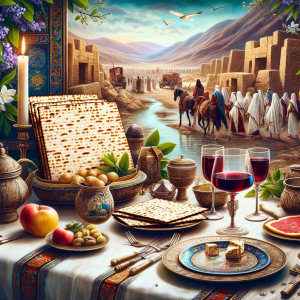Biblical Feasts and Holy Days (2of8)

Lesson 6: Passover: History and Celebration
Title: “Passover: The Story of Redemption”
Introduction: An in-depth exploration of Passover’s rich history, its observances, and the profound significance it holds within both Jewish and Christian traditions.
Discussion Points and Possible Answers:
- Historical Background:
- The Exodus: Described in Exodus chapters 1-15, the story of Israel’s liberation from Egyptian bondage.
- The Plagues: Ten plagues that culminated in the Israelites’ freedom (Exodus 7-11).
- Firstborn’s Protection: The event where the blood of a lamb protected Israelite firstborns (Exodus 12).
- Traditional Observance:
- The Seder Meal: A ritual feast marking the beginning of Passover, with specific foods symbolizing various aspects of the Exodus.
- Symbolic Foods: Matzah (unleavened bread), Maror (bitter herbs), Charoset (sweet paste), and more.
- Reading of the Haggadah: The narrative of the Israelites’ escape from Egypt, including prayers and songs.
- Significance in the New Testament:
- The Last Supper: Often interpreted as a Passover meal Jesus shared with his disciples (Matthew 26:17-30).
- Yeshua as the Passover Lamb: 1 Corinthians 5:7 portrays Jesus as the sacrificial lamb, signifying salvation and deliverance from sin.
Summary: An overview of Passover’s key themes of liberation, divine intervention, and God’s deliverance, bridging Jewish and Christian narratives.
Biblical Story: The original Passover night in Egypt, marking a pivotal moment in Jewish history (Exodus 12).
Related References:
- Exodus 12: Describing the first Passover.
- 1 Corinthians 5:7: Paul’s interpretation of Christ as the Passover lamb.
- “Christ in the Passover” by Ceil and Moishe Rosen: A comprehensive look into Passover and its Christological interpretations.
Conclusion: Discussion on Passover’s enduring symbol of deliverance and redemption, resonating deeply in both Jewish and Christian faiths.

